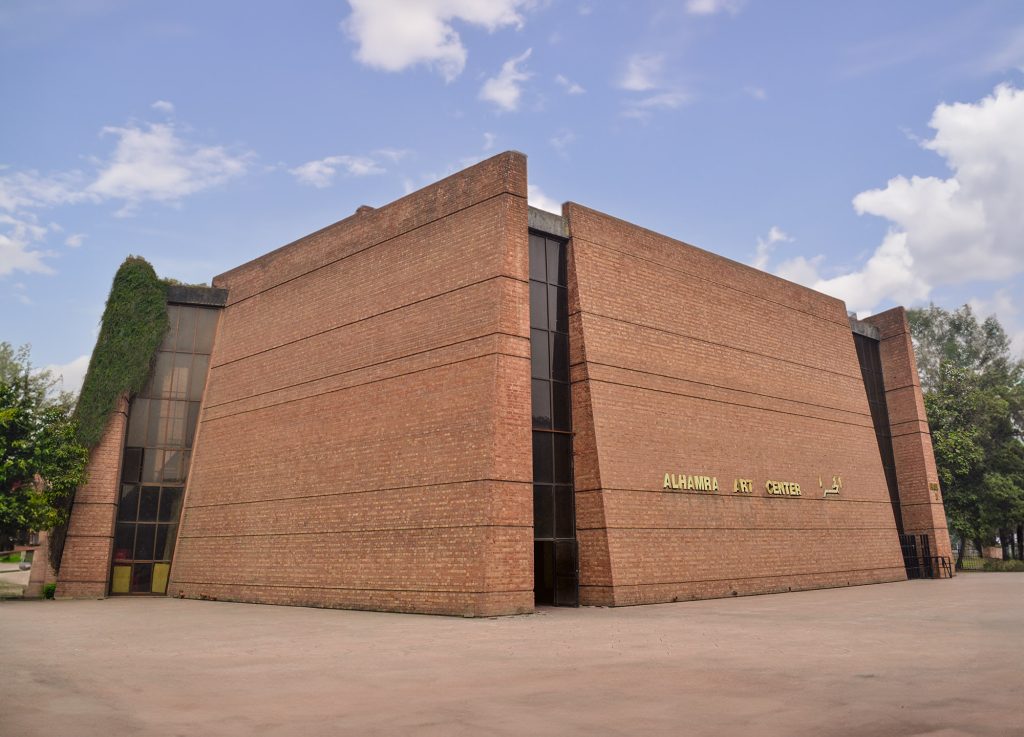Alhamra Art Centre
The Alhamra Art Centre is a vital centere of the Lahore’s cultural scene, in which exhibitions, panels, and talks are regularly hosted. Inspired by Mughal era architecture, the octagonal structures of the modernist red brick building possess enhanced acoustics, making it the perfect venue for the presentation of video and live performances. At this site, LB01 brought together a range of artworks with a marked social bent that refers to events of major significance that have taken place globally in the last sixty years. Themes range from the 1947 partition of India and Pakistan to the Cold War to the Non-Aligned Movement and other various struggles against forms of domination. Specially conceived for LB01, Shezad Dawood’s textile paintings made on denim and local fabric reflect upon Pakistan-US relations since the 1950s. The works refer to past influences of American soft power, ranging from music to the proliferation of video games in Pakistan in the 1980s. Bangladeshi artist Naeem Mohaiemen examines how political collectivities in newly independent nation-states end up reinscribing power relations, instead of decentering them. His three-channel film examines the activities of the Non-Aligned Movement (NAM) and the rise of the Organization of Islamic Cooperation (OIC). Turkish artist Halil Altindere’s video is a collaboration with a group of activist Romani rappers, who use hip-hop to protest the neoliberal destruction of their neighborhood in Sulukule, Istanbul. In Kay Walkowiak’s work, five modernist art objects tell stories of “living” in different places in the densely populated metropolis of Hong Kong. The artist examines cultural-historical attitudes of the East and West in today’s post-colonial Hong Kong. Salman Toor combines the mediums of painting, collage, and installation to work through themes of assimilation and resistance as experienced by layers of Pakistani society inhabiting liminal spaces. Karachi-based artist Seema Nusrat investigates the changing face of her native city through measures of policing, securitization and urban regulation as manifest in the barricades and barriers that have come to form a new kind of architecture of the city. In a performance created especially for LB01, Salima Hashmi revives the school teacher character from her highly satirical performances of the 1970s to address the divided present. Zambeel presents dramatic readings set against the backdrop of Pakistan railways, paying homage to modernist Urdu literature in which travel is a recurring motif. Naiza Khan’s performance is the manifestation of a multi-year engagement with the site of Manora, Sindh near the megacity of Karachi in which she broaches the subject of weather patterns, boundaries, and bodies.
